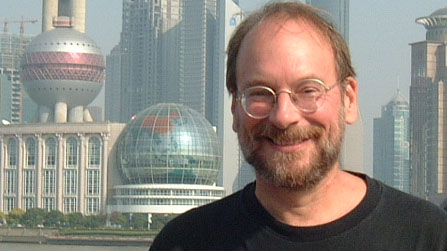
It’s bad enough when an Amazon Prime package touts “millions of songs for free” but for videos, they increasingly expect you to pony up. Recorded music has been devalued, possibly past the point of no return.
Fortunately, the recording industry is only one facet of the music industry. There’s still songwriting, scoring, live performances, theatrical productions, audiobooks and plenty more.
One of SAG/AFTRA’s main negotiation points during their recent strike was about protecting all industry people from the changes that AI will bring. The union was concerned about humans being cut out of their industry entirely—either because they are literally no longer needed, or because work they’d already done could be recycled.
If you’re hearing echoes of this in the music industry, well, you should.
COPYRIGHT, OR COPIED RIGHT?
But first, let’s zoom out. We already have some protection for our work. Copyright gives the creator the right to decide who will have the right to copy their work. However, digital technology shredded copyright laws by making it possible to create perfect copies of pretty much anything.
In the music industry, that started more than 20 years ago with Napster, Limewire and others. Now, on top of that, we’re facing the same issues that confront Hollywood.
With the SAG/AFTRA contract, actors have control over how their performances are digitally altered. If you’re Harrison Ford, Disney can’t modify your part in Dial of Destiny with AI, then use it as a cameo for a Marvel Comic Universe movie—unless you give them permission. Presumably, that costs something.
We have similar safeguards for sampling. Aside from strict fair-use applications, you can’t just take part of a song and use it in something else without permission from the copyright holder.
SAG/AFTRA also negotiated compensation for digital likeness. If Disney uses an AI-generated version of Harrison Ford in an Indiana Jones sequel based around Phoebe Waller-Bridge, then he’ll be paid as if he was acting in the movie. Clearly, Disney would be trading on Ford’s image and likeness.
This also starts intersecting with the music business. Suppose someone has a concept of producing a song with Beyoncé and David Bowie, and there are enough David Bowie vocal tracks that AI can put together a convincing duet. In this case, Bowie’s estate would need to give permission and have the right to negotiate compensation. This is related to what KISS is doing, where they’ve basically licensed themselves to be their own avatars. Long after the members of KISS are gone, their heirs and assigns will have the rights to their digital likenesses and can continue generating KISS content.
The music industry desperately needs revisions to the copyright laws to take these changes into account, just as the movie industry negotiated contracts that now have the force of law. But it can’t just stop there.
PROTECTING THE UNSUNG HEROES
Much of SAG/AFTRA’s negotiations involved protecting those who don’t have star power leverage. Originally, the industry wanted to have an extra come by for a day, do a shoot, then recycle that extra in future movies with no additional payment. Thankfully, that got struck down.
But consider studio musicians. They could be hired for a day, record hours of playing scales and chords, be paid for their session, and…bye. AI could stitch together the needed notes and chords to play parts.
If studio musicians were negotiating with the record industry, plain language would need to specify what’s acceptable. For example, an agreement could allow material to be re-used on the same project for which the musician was hired. That would cover situations like when the producer decides to add a solo phrase later in the song.
What wouldn’t seem fair is the producer using the same notes and chords to create a solo on a different project. Here, we can follow SAG/ AFTRA’s lead and make permission essential. There’s precedent: Authors can give permission to reprint an article, with changes permitted by the author, typically for a lower price. Likewise, the studio musician could get paid for a solo on someone else’s project. But because they wouldn’t even need to show up, they’d probably accept a reduced rate. Problem solved: Musicians get income, producers save money.
SYNTHETIC PERFORMERS
Here’s where it gets dicey. In the previous examples, who did the work and who owned it was at least somewhat clear, as are ways to potentially protect those rights. But consumers vote with their dollars. No one can tell them “You can’t like that synthetic act; you need to support real humans.” That will trigger middle fingers going up at concerts, not lit phone screens.
What happens when musicians aren’t needed to compose? Or create an act that audiences like? Of course, at first, human coders will write the software, and artists will craft the synthetic performers’ visual look and sound…but for how long? Audience reactions will be tracked, fed to an algorithm and provide data points for automatically refining the act.
Craig Anderton’s Open Channel: Stepping Up to the Tipping Point
Our only hope is that the novelty of synthetic experiences will wear off. Machines might be able to write songs, but they may not be able to write standards. Some say the drive for perfection in music has backfired by creating “perfect” music that doesn’t grab people emotionally. The same might happen with synthetic artists and performances.
Would I bet that will happen? I’ll get back to you on that one.



